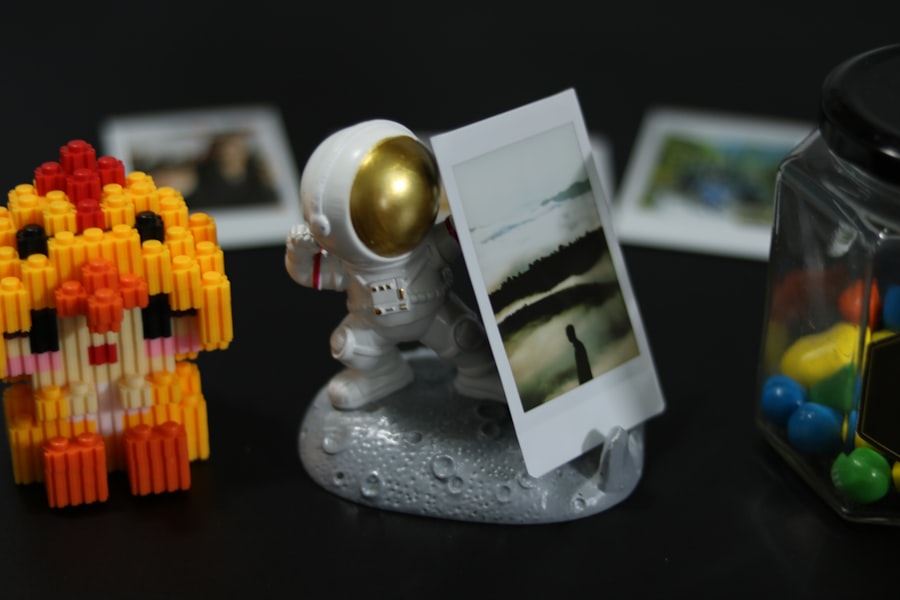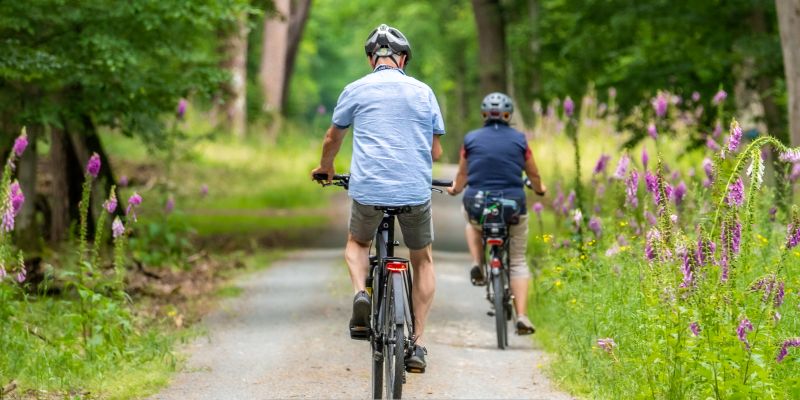Microadventures are short, simple, and often spontaneous excursions that allow individuals to escape the routine of daily life without the need for extensive planning or travel. These adventures can take place over a weekend, a single day, or even just a few hours, making them accessible to anyone regardless of their schedule. The concept encourages people to explore their local surroundings, engage with nature, and experience new activities that can invigorate their spirits and broaden their horizons.
Microadventures can range from hiking a nearby trail to camping in a local park or even embarking on a bike ride through the city. The beauty of microadventures lies in their flexibility and the emphasis on exploration. They are not bound by the constraints of traditional vacations, which often require significant time and financial investment.
Instead, microadventures invite individuals to embrace spontaneity and creativity, discovering hidden gems in their own backyards. This approach to adventure fosters a sense of curiosity and encourages people to appreciate the world around them, no matter how close it may be.
Key Takeaways
- Microadventures are short, simple, local adventures that are accessible to everyone, regardless of time or budget constraints.
- Microadventures provide an opportunity to break away from routine, explore new places, and challenge yourself in small, manageable ways.
- To plan a microadventure, start by setting a clear goal, choosing a location, and considering the time, budget, and gear needed for the adventure.
- When choosing the right microadventure for you, consider your interests, fitness level, and the amount of time you have available.
- Essential gear for microadventures includes appropriate clothing, navigation tools, first aid kit, and any specific gear needed for the chosen activity.
Benefits of Microadventures
Disconnecting from Stress
One of the most significant advantages is the opportunity to disconnect from the stresses of everyday life. In a world dominated by technology and constant connectivity, taking time for a microadventure allows individuals to unplug and immerse themselves in nature or new experiences.
Improving Mental and Physical Health
This break from routine can lead to reduced stress levels, improved mood, and a greater sense of overall happiness. Additionally, microadventures promote physical activity, which is essential for maintaining a healthy lifestyle. Whether it involves hiking, biking, or simply exploring a new area on foot, these short excursions encourage movement and can contribute to better cardiovascular health.
Boosting Creativity and Problem-Solving Skills
Furthermore, engaging in outdoor activities has been shown to boost creativity and problem-solving skills, as individuals are often faced with new challenges and environments that stimulate their minds. The combination of physical exertion and mental engagement makes microadventures a holistic approach to well-being.
How to Plan a Microadventure

Planning a microadventure does not have to be a daunting task; in fact, it can be as simple as choosing a destination and setting a date. The first step is to identify what type of adventure resonates with personal interests and available time. This could involve researching local parks, trails, or attractions that have been on the radar but never explored.
Once a destination is chosen, individuals should consider logistics such as transportation, necessary permits, and any potential costs involved. Flexibility is key when planning a microadventure. While having a general outline is helpful, being open to spontaneous changes can lead to unexpected discoveries.
For instance, if the original plan was to hike a specific trail but the weather turns unfavorable, it might be worth exploring an alternative route or activity nearby. The essence of microadventures lies in their adaptability; they should be enjoyable rather than stressful. By keeping plans loose and allowing for spontaneity, individuals can fully embrace the spirit of adventure.
Choosing the Right Microadventure for You
| Microadventure Type | Duration | Difficulty Level | Cost |
|---|---|---|---|
| Hiking | 1 day | Easy to Moderate | Low |
| Camping | 1-2 days | Easy to Moderate | Low to Moderate |
| Kayaking | 1 day | Moderate | Low to Moderate |
| Cycling | 1 day | Easy to Moderate | Low |
Selecting the right microadventure involves considering personal interests, fitness levels, and available resources. For those who thrive in nature, options such as hiking, kayaking, or camping may be appealing. Conversely, urban dwellers might find joy in exploring local museums, street art, or food markets.
Understanding what excites and motivates an individual is crucial in choosing an adventure that will be both enjoyable and fulfilling. Another important factor is assessing one’s physical capabilities. While some may be eager to tackle challenging hikes or strenuous activities, others may prefer more leisurely pursuits that allow for relaxation and enjoyment without physical strain.
It is essential to strike a balance between pushing personal boundaries and ensuring that the experience remains enjoyable. Ultimately, the right microadventure should align with personal interests while also providing an opportunity for growth and exploration.
Essential Gear for Microadventures
The gear needed for microadventures largely depends on the type of activity planned. However, there are some essential items that can enhance any outdoor experience. A sturdy pair of shoes is crucial for comfort and safety during hikes or walks.
Additionally, appropriate clothing that suits the weather conditions will ensure comfort throughout the adventure. Layering is often recommended, as it allows individuals to adjust their attire based on changing temperatures. For those venturing into nature, carrying a small backpack with essentials such as water, snacks, a first-aid kit, and navigation tools is advisable.
A portable phone charger can also be beneficial for capturing memories or accessing maps during the adventure. If camping is part of the plan, lightweight tents and sleeping bags designed for easy transport can make overnight trips more enjoyable. Ultimately, having the right gear can significantly enhance the overall experience of a microadventure.
Safety Tips for Microadventures

Safety should always be a priority when embarking on any adventure, no matter how small. Before setting out on a microadventure, individuals should inform someone about their plans and expected return time. This simple step ensures that someone is aware of their whereabouts in case of an emergency.
Additionally, checking weather conditions beforehand can help avoid unexpected challenges during the outing. When exploring unfamiliar areas, it is wise to carry a map or download offline navigation apps to prevent getting lost. Staying hydrated and bringing sufficient snacks can help maintain energy levels throughout the adventure.
Moreover, understanding personal limits is crucial; if an activity feels too challenging or unsafe at any point, it is perfectly acceptable to turn back or modify plans. By prioritizing safety and preparation, individuals can enjoy their microadventures with peace of mind.
Finding Microadventure Inspiration
Inspiration for microadventures can come from various sources. Social media platforms like Instagram and Pinterest are filled with stunning visuals that showcase unique experiences and locations. Following adventure enthusiasts or local explorers can provide ideas for new activities or destinations that may not have been previously considered.
Additionally, blogs dedicated to outdoor exploration often share personal stories and tips that can spark creativity. Local community boards or websites may also feature events or activities that encourage exploration within the area. Joining groups focused on outdoor activities can connect individuals with like-minded adventurers who share similar interests.
Engaging with others who are passionate about exploration can lead to new friendships and collaborative adventures that enrich the experience even further.
Incorporating Microadventures into Your Routine
Integrating microadventures into daily life requires intentionality but can be incredibly rewarding. One effective approach is to set aside specific days each month dedicated to exploration—whether it’s a Saturday hike or an evening bike ride after work. By scheduling these adventures into one’s calendar, they become a priority rather than an afterthought.
Another strategy is to embrace spontaneity during free time. If an individual finds themselves with an unexpected afternoon off or a weekend without plans, they can seize the opportunity for an impromptu adventure. This flexibility allows for exploration without the pressure of extensive planning while fostering a sense of excitement about what each day may bring.
Microadventures for Different Seasons
Microadventures can be enjoyed year-round by adapting activities to suit seasonal changes. In spring and summer, hiking trails come alive with vibrant flora and fauna; picnics in local parks become delightful escapes from daily routines. Water-based activities such as kayaking or paddleboarding are also popular during warmer months when temperatures invite outdoor fun.
As autumn arrives, opportunities for leaf-peeping hikes or visiting pumpkin patches emerge. The crisp air provides an invigorating backdrop for outdoor activities like biking or camping under starry skies. Winter brings its own charm; snowshoeing or ice skating can transform familiar landscapes into winter wonderlands.
Each season offers unique experiences that encourage individuals to embrace nature’s beauty throughout the year.
Microadventures for Families and Kids
Microadventures are particularly beneficial for families looking to bond while creating lasting memories together. Engaging children in outdoor activities fosters a love for nature and encourages physical activity from an early age. Simple outings such as visiting local parks for scavenger hunts or embarking on family bike rides can provide opportunities for exploration while strengthening family ties.
Involving children in planning microadventures can also enhance their excitement and investment in the experience. Allowing them to choose destinations or activities empowers them while teaching valuable decision-making skills. Whether it’s camping in the backyard or visiting nearby attractions, family microadventures create shared experiences that enrich relationships and instill a sense of adventure in young minds.
Microadventures for Solo Travelers
For solo travelers seeking adventure without companionship, microadventures offer an ideal solution for exploration at one’s own pace. Traveling alone allows individuals to connect deeply with their surroundings while fostering self-discovery through new experiences. Whether it’s hiking alone on scenic trails or exploring urban landscapes through photography walks, solo microadventures provide opportunities for personal growth.
Moreover, embarking on solo adventures encourages individuals to step outside their comfort zones and build confidence in navigating unfamiliar environments independently. It allows them to embrace spontaneity without needing to accommodate others’ preferences or schedules. Ultimately, solo microadventures empower individuals to cultivate resilience while enjoying the freedom that comes with exploring on their own terms.
In conclusion, microadventures present an exciting way for individuals to break free from routine and explore their surroundings without extensive planning or financial commitment. With numerous benefits ranging from improved mental health to enhanced physical fitness, these short excursions encourage creativity and spontaneity in everyday life. By carefully planning adventures tailored to personal interests while prioritizing safety and preparation, anyone can embark on fulfilling journeys that enrich their lives—regardless of season or circumstance.
FAQs
What is a microadventure?
A microadventure is a short, simple, and low-cost outdoor adventure that is close to home. It is designed to be achievable for people with busy lives and limited time and resources.
What are some examples of microadventures?
Examples of microadventures include camping in your backyard, hiking a local trail, biking to a nearby park, or kayaking on a nearby river or lake. The key is to find an outdoor activity that is easily accessible and can be done in a short amount of time.
Why are microadventures popular?
Microadventures are popular because they offer a way for people to experience the benefits of outdoor adventure without having to commit to a long and expensive trip. They provide a sense of escape and rejuvenation, even in the midst of a busy schedule.
What are the benefits of microadventures?
The benefits of microadventures include stress relief, physical activity, connection with nature, and the opportunity to try new activities. They can also help people develop a sense of exploration and curiosity about their local environment.
How can I plan a microadventure?
To plan a microadventure, start by researching nearby outdoor activities and destinations. Consider the time, equipment, and budget you have available, and choose an activity that fits within those constraints. Make sure to check the weather and any local regulations or permits that may be required.









